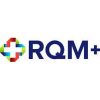Companies must show that their software systems are performing as expected to comply with regulatory requirements. All validation activities and test results must be documented to define both how the software is used and what the user needs to do with it. By using this documentation, we can ensure the software will work as intended in all anticipated situations.
The computer software assurance (CSA) program limits testing to functions directly related to product quality and patient safety. The draft guidance from FDA for CSA reverses the traditional CSV approach of 80% documentation and 20% testing. CSA also encourages companies to use vendor documentation to reduce testing burdens.
To ensure a reliable validation outcome, FDA guidelines recommend defining a test strategy with appropriate approaches for IQ-OQ-PQ requirements. This process includes installation qualification (IQ) and configuration to ensure the system has been configured and installed according to approved design specifications. Other activities include Operational qualification (OQ) testing in which functionality defined in the specifications is verified, as well as Performance qualification (PQ) testing, which verifies the software will meet the user’s needs and is fit for intended use, based on the user requirements.
Automation-Enabling Validation Solutions for QMS Can Transform the CSV Process
The CSV process can be greatly enhanced by adding automation. Automation enables rapid upgrade timelines with solutions that streamline impact assessments and drive changes to validation scripts according to the results of those assessments.
It is possible to execute both an IQ and an OQ test of functional requirements by leveraging a technology solution that uses a controlled cloud validation environment. PQ validation is also a valid methodology for testing user requirements. By utilizing capabilities such as automated validation script generation or by generating high-quality validation scripts directly from user requirements, CSV solutions provide many advantages, including built-in requirements management that improves validation methodology, as scripts are automatically generated from requirements. This approach shifts the validation methodology, authoring validation scripts before requirements are even implemented in the software.
Aside from improving script authoring efficiency and quality, having access to automated script generation is also beneficial. With automated execution, script authoring is no longer a manual process, which reduces the risk of misinterpreting or missing requirements. Additionally, automating script execution improves the quality of artifacts and script execution efficiency. It is possible to perform OQ validation without human intervention once scripts are automatically generated from user requirements.
To ensure that the script hits every possible scenario, the right automation technology should be different from traditional record-and-playback automation. For application upgrades, there is no pre-recording, manual validation script execution, or re-recording. The technology also distinguishes itself from API-based technologies, which execute in the background and lose track of user behavior. Validation with Automation-Enabling Solutions allows users to emulate all interactions with the system, automating script execution in the same way that manual testers would.
As a company grows and develops processes that satisfy regulatory requirements, it becomes increasingly important to validate software and services. The addition of automation to CSV can drive businesses forward along quality improvement journey by integrating, harmonizing, and leading quality processes to maturity, while enhancing flexibility, agility, speed, and scale.
Developing initial processes and organizational change management technologies will help organizations move towards higher quality and compliance maturity levels, where siloed systems can be eliminated and a better structure for evaluating quality can be established.
By automating the entire validation process, from defining requirements and creating the script to executing it and delivering the summative report, an automation solution can improve process efficiency and lower total cost of ownership.







